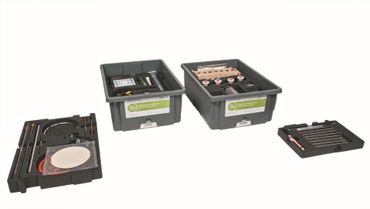Principle
Most plants we know in nature or as pot plants, form flowers. They are therefore called flowering plants. The time at which a plant flowers differs very much between individual plant species. Anemones, primroses, cherry trees and apple tree flower in spring; larkspurs, roses and carnations in summer; dahlias and chrysanthemums in autumn and the Christmas rose in winter. The students shall recognize in this experiment that a flower is made up of various parts. Some of these parts are similar, but we also find parts of different shapes and colours in the same flower.
Benefits
-
Experiment is part of a complete solution set with a total of 44 experiments for botany, reproduction, soil, food and digestion, senses, physiology.
-
With student worksheet, appropriate for all class levels.
-
With detailed instructor information.
-
Optimized for tight schedules, i.e. minimum preparation time required.
-
Biology solution set specifically designed to include all required accessories.
Tasks
Study the parts composing a flower and how those parts are arranged.



